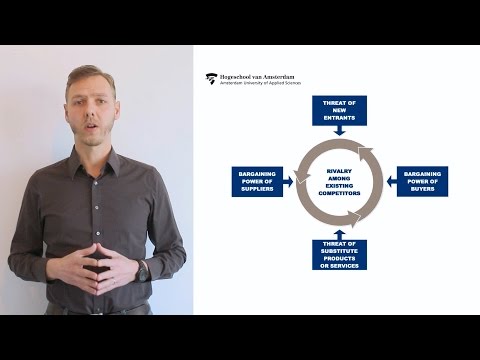

RMSE is the standard deviation of the errors which occur when a prediction is made on a dataset. This is the same as MSE but the root of the value is considered while determining the accuracy of the model. Here N is the total number of observations/rows in the dataset. The sigma symbol denotes that the difference between actual and predicted values taken on every i value ranging from 1 to n. MSE is calculated by taking the average of the square of the difference between the original and predicted values of the data. MAE takes the average of this error from every sample in a dataset and gives the output.
What is a good adjusted R-squared?
In other fields, the standards for a good R-Squared reading can be much higher, such as 0.9 or above. In finance, an R-Squared above 0.7 would generally be seen as showing a high level of correlation, whereas a measure below 0.4 would show a low correlation.
In anoverfittingcondition, an incorrectly excessive worth of R-squared is obtained, even when the model really has a decreased ability to predict. The adjusted R-squared is a modified version of R-squared that has been adjusted for the number of predictors in the model. The adjusted R-squared increases only if the new term improves the model more than would be expected by chance.
In the above mutual information scores, we can see that LSTAT has a strong relationship with the target variable and the three random features that we added have no relationship with the target. Adjusted R-Squared can be calculated mathematically in terms of sum of squares. The only difference between R-square and Adjusted R-square equation is degree of freedom. Adjusted R-squared value can be calculated based on value of r-squared, number of independent variables , total sample size. The adjusted R-squared is a modified model of R2 for the number of predictors in a mannequin. R-Squared is a statistical measure of match that signifies how much variation of a dependent variable is explained by the independent variable in a regression mannequin.
Diagnostic Plots
These different approaches lead to various calculations of pseudo R-squareds with regressions of categorical outcome variables. Used together, R-squared and beta give investors a thorough picture of the performance of asset managers. R-squared is a technical tool and the formula for R-squared requires us to consider a interpretation of adjusted r squared few statistical metrics like correlation and standard deviation. It helps to determine how identical a mutual fund’s performance is to a given benchmark index. Do take note that R-squared does not measure the performance of the fund. R-squared does not tell us if a particular mutual fund is good to invest in or not.
But note that business knowledge is needed so that we don’t remove any feature which may impact the business. They are not calculated to minimize variance, so the OLS approach to goodness-of-fit does not apply. However, to evaluate the goodness-of-fit of logistic models, several pseudo R-squareds have been developed.
We’ve already seen a few functions that produce logical variables, for instance, is.matrix(). The x-axis shows the number of variables at a time and y-axis shows the parameter values. Out of the 4 models marked having the highest adjr, the two best models to select is mindex 11 and 15 with three and four variables respectively. Comparing these two models, we see that the one with variables disp, hp, drat has slightly higher adjr and has lower AIC, predrsq and fpe than the four-variable model.
Partial Correlation: Pcor() Function
This information can be used to examine how each set of scores influenced the prediction of Y. Multiple regression results are typically reported in both unstandardized and standardized formats. In R, this requires running the regression analysis separately then combining the two results. I first ran a set of data and then reported the unstandardized solution. A suppressor variable is a third variable that affects the correlation between the two other variables, which can increase or decrease their bivariate correlation coefficient. This is one of the crucial aspects of multiple linear regression.

The result of the model will give Residual Standard Error, Multiple R2, Adjusted R2, F-statistic and p-value. There is visualization of data using ggplot() and geom() in last steps. Diagnostic plots visually show which variables are statistically significant.TFf. Longitudinal analysis of data requires special formatting of data. For example, ENGSIZE, WEIGHT, REVOLUTI, and HRSEPOWE, together in a theoretical explanatory model, account for 29.29% of the variance in HWYMPG. We see in contrast that WEIGHT and PASSENGE account for 20.29%.
It reflects how much of a fund’s movements can be explained by changes in its benchmark index. Once we overcome the initial need to cling to our conventional methods, we can begin to be more receptive to the tremendous opportunities that these technologies present. Adjusted R Squared is thus a better model evaluator and can correlate the variables more efficiently than R Squared. Suppose if there are two observations then, there can be one best fitting line that passes through both the points.
Gradient Descent starts with a random solution, and then based on the direction of the gradient, the solution is updated to the new value where the cost function has a lower value. If the p-value of a variable is greater than a certain limit (usually 0.05), the variable is insignificant in the prediction of the target variable. The aforementioned graph is an ideal cost vs the number of iterations curve. Note that the cost initially decreases as the number of iterations increases, but after certain iterations, the gradient descent converges and the cost does not decrease anymore.
Commonality Analysis
If independent variables are correlated, you can try to take one out of them. Test), beta weights, and structure coefficients; however, commonality analysis provides the added knowledge of how combinations of variables affect prediction of Y. The results will first list the data set values, then report the results for the repeated measures analysis of variance.
R2, variables having larger R2 values are the best fit variables for the model and always increases as more predictors are added to the model. As with all research papers, the reader requires a basic understanding of methodology to evaluate how relevant the results are to wider practice. If your main objective for your regression model is to explain the relationship between the predictor and the response variable, the R-squared is mostly irrelevant.
- An example of identifying the relationship between the distance covered by the cab driver and the age of the driver and years of experience .
- If independent variables are correlated, you can try to take one out of them.
- In simple terms, the variable is linearly dependent on some other variables.
- The presence of heteroscedasticity can be easily seen by plotting the residual vs fitted value curve.
What value is the sum of the residuals of a linear regression close to? RMSE is the square root of the average squared difference between predicted and actual values. In most of the regression problems, mean squared error is used to determine the model’s performance. Opt automatic search procedure, and let the R/Python or other tool decide which variables are best, stepwise regression analysis can be approached to do this. The MLR model assumes that all the observations should be independent of each other, or in other words, residuals values should be independent of one another.
Multiple linear regression Formula
Dropping the variable really impacts model’s overall prediction power. So, if we have 20 predictor variables you want to know which variable is impacting and which variable is not impacting , this can be decided by looking at the P-value. Whether the R-squared value for this regression model is 0.2 or 0.9 doesn’t change this interpretation. Since you are simply interested in therelationshipbetween population size and the number of flower shops, you don’t have to be overly concerned with the R-square value of the model. The adjusted R2 can be negative, and its value will always be less than or equal to that of R2.
How do you interpret adjusted R-squared value?
Compared to a model with additional input variables, a lower adjusted R-squared indicates that the additional input variables are not adding value to the model. Compared to a model with additional input variables, a higher adjusted R-squared indicates that the additional input variables are adding value to the model.
R-Squared of a single fund will not tell investors much about their portfolio. Also, it is a technical and statistical tool so to calculate R-Squared requires some expertise in the domain. For a true comparative analysis, R-Squared will have to be calculated for every fund to see how the entire portfolio is doing. R-squared is beneficial when it is analysed along with beta or alpha. Metrics like R-squared are good enablers and catalysts to an investor’s research but not the sole reference point. Before understanding their relation, let’s first understand what is meant by beta.
However, the statistical significance of a predictor variable may be based on the order of entry . We conclude that our linear regression model fits the data better than the model with no independent variables. To determine the biasedness of the model, you need to assess the residuals plots. A good model can have a low R-squared value whereas you can have a high R-squared value for a model that does not have proper goodness-of-fit. R-squared does not inform if the regression model has an adequate fit or not. R-squared cannot be used to check if the coefficient estimates and predictions are biased or not.
Another way to deal with this problem is to use non-parametric models, such as decision trees, which can deal with heterogeneous data quite efficiently. If the value is too small, the gradient descent algorithm takes ages to converge to the optimal solution. On the other hand, if the value of the learning rate is high, the gradient descent will overshoot the optimal solution and most likely never converge to the optimal solution. MAE measures the average absolute difference between predicted and actual values, providing a more easily interpretable metric for non-normal distributions. MSE measures the average difference between predicted and actual values.
F-ratio is typically the measure of comparing means of a group from the overall variance of the model. However, in regression analysis, F-ratio helps in determining the precision of the model. If the value is more than 1, it represents that model is precise and could be used for determining the impact. After finding out that two variables are correlated, a researcher typically moves to another step called regression. The regression test finds out the degree of impact of one variable on another .
The presence of heteroscedasticity can often be seen in the form of a cone-like scatter plot for residual vs fitted values. The residual vs fitted value plot is used to see whether the predicted values and residuals have a correlation or not. If the residuals are distributed normally, with a mean around the fitted value and a constant variance, our model is working fine; otherwise, there is some issue with the model. The independent variables are linearly independent of each other, i.e. there is no multicollinearity in the data. It is a common practice to test data science aspirants on commonly used machine learning algorithms in interviews. These conventional algorithms being linear regression, logistic regression, clustering, decision trees etc.
What is a good adjusted R-squared?
In other fields, the standards for a good R-Squared reading can be much higher, such as 0.9 or above. In finance, an R-Squared above 0.7 would generally be seen as showing a high level of correlation, whereas a measure below 0.4 would show a low correlation.

